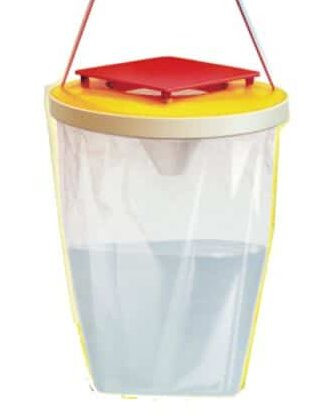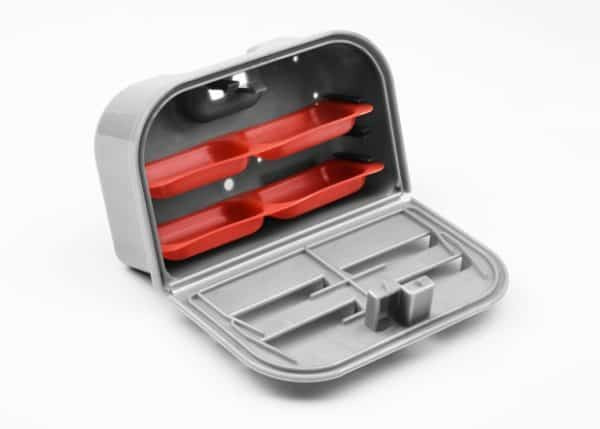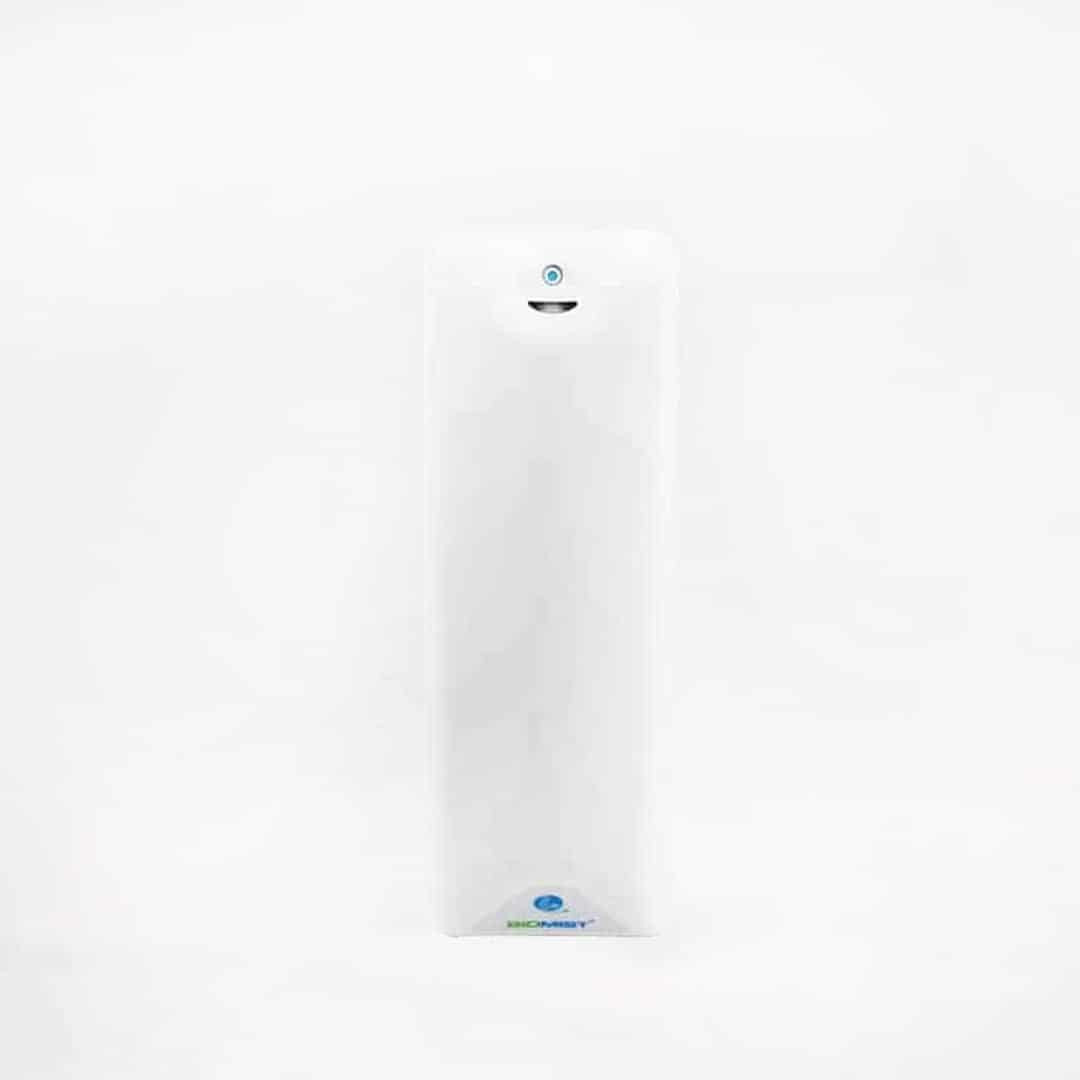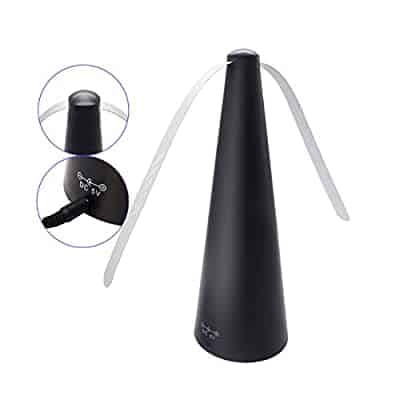Controlling flies in a restaurant is crucial for maintaining hygiene, customer satisfaction, and preventing foodborne illnesses. Are you looking for effective ways to keep these pesky insects away from your establishment? At flyermedia.net, we understand the importance of a fly-free environment and offer practical solutions to help you achieve it. Implement a combination of preventive measures, sanitation practices, and targeted control methods to create a pest-free dining experience. For comprehensive insights, consider exploring Integrated Pest Management (IPM) strategies, which focus on long-term prevention and minimal use of pesticides, alongside biological control methods that utilize natural predators to manage fly populations.
1. Prevention: Maintaining Impeccable Cleanliness
The foundation of effective fly control is maintaining a high standard of cleanliness. Are you consistently cleaning your restaurant to deny flies the food and water sources they need to survive and breed?
Comprehensive Cleaning Program: Follow a thorough and regular cleaning program that includes:
- Rangehood Extraction Filters: Clean or replace these filters regularly to remove grease and food particles that attract flies.
- Grease Traps: Ensure grease traps are cleaned frequently to prevent buildup, which serves as a breeding ground for flies.
- Floor Drains: Regularly flush and disinfect floor drains to eliminate organic matter and standing water.
- Floor Mats: Clean or replace floor mats to remove food debris and moisture.
- Mop Heads: Use clean mop heads and allow floors to dry thoroughly after mopping to prevent attracting flies.
By creating an environment that denies flies a reason to linger, you significantly reduce their presence.
2. Physical Barriers: Fly Screens and Air Curtains
Physical barriers are essential for preventing flies from entering your restaurant. Are you utilizing fly screens and air curtains to protect your establishment?
2.1 Fly Screens
 Fly screen on a restaurant door
Fly screen on a restaurant door
Alt text: Close-up of a well-maintained fly screen on a restaurant door, highlighting the mesh and sturdy frame, providing effective insect control.
Fly screens are a primary defense against flies.
- Kitchen Doors: Screen the back door of your kitchen and install a spring-loaded, self-closing hinge to ensure it remains closed.
- Exhaust Fans and Ventilation Outlets: Install insect mesh over these openings to prevent flies from entering.
- Seals on Windows and Doors: Maintain seals in good condition and check for gaps around the edges of screens. Repair or replace damaged seals promptly.
- Draft Excluders: Install draft excluders along the bottom of doors, especially the back kitchen door, to prevent flies and cockroaches from entering.
2.2 Air Curtains
Air curtains can provide a fast-moving airstream that expels flying insects attempting to enter.
- Building Entry and Exit Points: Fit air curtains at these points and ensure they operate according to specifications.
- Airflow Direction: Verify that the airflow is directed outwards to effectively deter insects.
2.3 Strip Curtains
Strip curtains act as a physical barrier to deter flying insects.
- Continuous Visual Barrier: Ensure strips provide a continuous visual barrier when hanging motionless and are trimmed to ground level.
- Considerations: Keep in mind that strip doors can restrict airflow and may be difficult to carry items through and clean.
- Alternatives: Fly wire screen doors are generally preferable due to their ease of use and maintenance.
3. Environmental Control: Air Conditioning and Positive Pressure
Creating an unfavorable environment for flies can significantly reduce their presence. Are you using air conditioning and positive pressure to deter flies?
- Cool, Low-Odor Environment: Maintain a cool environment with low odor, which is uncomfortable for flies.
- Positive Indoor Pressure: Ensure a slight outward flow of air is detectable when a door is partly opened. This prevents flies from entering.
4. Trapping Solutions: Bag Traps and Bait Stations
Trapping solutions can be effective in drawing flies away from your restaurant. Are you strategically using bag traps and bait stations?
4.1 Bag Traps
 Disposable fly bag trap hanging outdoors
Disposable fly bag trap hanging outdoors
Alt text: A disposable fly bag trap hanging outdoors, illustrating its use in attracting and capturing flies away from dining areas.
Bag traps attract flies and should be positioned away from customer areas.
- Placement: Hang traps in bin enclosures, around perimeter fences, near garden beds, and dumpsters.
- Avoid Customer Areas: Do not hang traps inside or near customer areas to prevent attracting flies to these zones.
- Optimal Conditions: For best results, hang traps in full sun.
- Maintenance: Replace the bag when it becomes full, smelly, or the attractant dries out.
4.2 Bait and Bait Stations
Fly bait is most effective when used in conjunction with a lockable fly bait station.
- Lockable Station: Use a lockable station to protect the bait from native animals and extend its lifespan by shielding it from the weather.
- Placement: Put fly bait into stations about the size of a mobile phone, with small trays to hold the bait. Place stations in bin enclosures, around perimeter fences, and other out-of-the-way areas.
- Application: Mix fly bait pellets with water to form a paste and paint inside bin lids and inside bin enclosures after emptying.
- Safety: Fly bait is poisonous and must be handled according to the manufacturer’s directions.
5. Automatic Fly Control Dispensers: Consistent Insecticide Application
Automatic fly control dispensers provide a measured dose of aerosol insecticide, offering a consistent approach to fly control. Are you using these dispensers effectively in your restaurant?
 Automatic fly control dispenser unit
Automatic fly control dispenser unit
Alt text: An automatic fly control dispenser unit mounted on a wall, showcasing its role in consistently releasing insecticide to manage fly populations.
- Formulation: Use only natural pyrethrum formulations, which have low mammalian toxicity but are effective against flying insects.
- Maintenance: Change aerosol cans every six weeks and replace batteries annually.
- Placement: Install dispensers in internal areas where flying insect infestation has been experienced, but not directly above food preparation and packaging areas.
- Strategic Positioning: Cover entry and exit points with automatic dispensers rather than trying to cover the entire indoor area. Focus on trouble spots such as sunny windows, rubbish bin areas, and kitchen areas.
- Airflow Considerations: Consider airflow when positioning automatic dispensers; avoid placing them where the product drifts straight out the door or window.
- Food Safety: Ensure that dispensers are food safe and suitable for use in commercial food spaces.
6. Innovative Solutions: Fly Fans and Their Effectiveness
Fly fans are an innovative, food-safe solution for keeping flies away from food displays. Are you considering fly fans for your restaurant?
 Fly fan on a service counter
Fly fan on a service counter
Alt text: A fly fan placed on a service counter, highlighting its holographic blades and use in creating a fly-free zone around food displays.
- Placement: Use fly fans on service counters, beside the till, on the pass, or inside food display cabinets.
- Mechanism: The holographic markings on the soft blades scare flies away.
- Safety: Soft blades ensure staff cannot harm themselves if they accidentally touch them.
- Power Source: Some fly fans come with a power cord; purchasing a fan with a power cord is recommended for environmental reasons.
7. Targeted Applications: Residual Sprays and Fly Sticky Paper
Targeted applications of residual sprays and fly sticky paper can help control fly populations in specific areas. Are you utilizing these methods in your restaurant?
7.1 Residual Sprays
- Application: Apply residual insecticide sprays to favored resting places of adult flies, such as table legs, backs of chairs, windowsills, and undersides of shelves.
- Placement Considerations: Spray placement will vary depending on whether your spray is food approved or not.
7.2 Fly Sticky Paper
- Placement: Hang in broom closets and beside external doors, keeping them out of view of customers and food prep areas.
8. The Role of UV Fly Lights in Restaurant Fly Control
UV fly lights play a crucial role in attracting and trapping flies in restaurants. Have you considered installing UV fly lights in your establishment?
8.1. Understanding UV Fly Lights
Ultraviolet (UV) fly lights are designed to attract flies using UV light. Once attracted, the flies are trapped on a glue board or electrocuted, depending on the type of light. These lights are an essential component of an integrated pest management (IPM) strategy for restaurants.
8.2. Types of UV Fly Lights
There are two primary types of UV fly lights:
- Glue Board Traps: These traps use UV light to attract flies to a sticky glue board, where they become trapped. Glue board traps are ideal for sensitive areas, such as dining rooms and food preparation zones, as they are silent and contain the dead insects.
- Electrocution Traps (Bug Zappers): These traps use an electrical grid to kill flies upon contact. While effective, electrocution traps are not recommended for food preparation areas due to the risk of insect fragments contaminating food surfaces.
8.3. Placement and Installation
Proper placement of UV fly lights is critical to their effectiveness. Consider the following guidelines:
- Strategic Locations: Place lights in areas where flies are most likely to be present, such as near entrances, windows, and garbage disposal areas.
- Height: Install lights at a height of approximately 5-6 feet from the ground for optimal attraction.
- Avoid Competition: Do not place lights near other light sources or in direct sunlight, as this can reduce their effectiveness.
- Distance from Food Prep Areas: Ensure that UV traps are not placed within 2 meters (approximately 6.5 feet) of food preparation areas to prevent contamination.
8.4. Maintenance
Regular maintenance is essential to ensure that UV fly lights remain effective.
- Glue Board Replacement: Replace adhesive boards monthly or as needed, following the manufacturer’s instructions.
- UV Tube Replacement: Replace shatterproof UV tubes as per the manufacturer’s instructions, typically every 9-12 months.
- Cleaning: Clean the lights regularly to remove dust and debris that can reduce their effectiveness.
8.5. Best Practices
Follow these best practices to maximize the effectiveness of UV fly lights:
- Integrated Approach: Use UV fly lights as part of an integrated pest management (IPM) program that includes sanitation, exclusion, and other control measures.
- Monitor and Adjust: Regularly monitor the effectiveness of the lights and adjust their placement as needed based on fly activity.
- Professional Service: Consider hiring a professional pest control service to install and maintain UV fly lights for optimal results.
9. Expert Advice: Consulting with Professionals
For a comprehensive approach to fly control, consider consulting with pest control professionals. Can expert advice benefit your restaurant?
- Customized Solutions: Professionals can assess your specific needs and provide tailored solutions.
- Ongoing Support: They can offer ongoing support and maintenance to ensure long-term fly control.
10. Understanding Fly Behavior and Biology for Effective Control
To effectively control flies in your restaurant, it’s important to understand their behavior and biology. What key aspects of fly behavior and biology should you be aware of?
10.1. Fly Species Commonly Found in Restaurants
Different species of flies exhibit varying behaviors and breeding patterns. Identifying the specific types of flies infesting your restaurant can help tailor control strategies.
- House Flies (Musca domestica): These are the most common flies found in restaurants. They are attracted to decaying organic matter, garbage, and food waste. House flies can transmit pathogens and contaminate food surfaces.
- Fruit Flies (Drosophila melanogaster): These small flies are attracted to fermenting fruits, vegetables, and sugary liquids. They are often found near fruit bowls, beverage dispensers, and drains.
- Drain Flies (Psychodidae): Also known as moth flies, these flies breed in stagnant water and organic matter found in drains and sewers. They are often seen near floor drains, sinks, and restrooms.
- Blow Flies (Calliphoridae): These large, metallic-colored flies are attracted to decaying meat and carrion. They are often found near dumpsters and garbage areas.
10.2. Fly Life Cycle
Understanding the life cycle of flies is crucial for implementing effective control measures.
- Egg: Flies lay their eggs in organic matter, such as garbage, decaying food, and stagnant water.
- Larva (Maggot): The eggs hatch into larvae, also known as maggots, which feed on the organic matter.
- Pupa: The larvae develop into pupae, which are encased in a hard shell.
- Adult: The adult fly emerges from the pupal case and begins to reproduce.
The entire life cycle can be completed in as little as 7-10 days under favorable conditions, allowing fly populations to grow rapidly.
10.3. Fly Behavior
Flies exhibit specific behaviors that influence their movement and feeding habits.
- Attraction to Odors: Flies are attracted to odors produced by decaying organic matter, food waste, and sugary liquids.
- Resting Habits: Flies often rest on walls, ceilings, and other surfaces near food sources.
- Flight Patterns: Flies tend to fly in zigzag patterns and are attracted to light sources.
- Feeding Habits: Flies feed on a wide range of organic matter, including garbage, decaying food, and sugary liquids. They regurgitate digestive enzymes onto their food before consuming it.
10.4. Effective Control Strategies
Understanding fly behavior and biology can help implement targeted control strategies.
- Sanitation: Implement a comprehensive sanitation program to eliminate food sources and breeding sites.
- Exclusion: Seal cracks and crevices, install fly screens, and use air curtains to prevent flies from entering the restaurant.
- Trapping: Use fly traps and bait stations to capture and kill adult flies.
- Insecticides: Apply insecticides to surfaces where flies rest and breed, following label instructions and safety precautions.
By understanding the behavior and biology of flies, you can implement effective control measures to minimize their presence in your restaurant.
Maintaining a fly-free restaurant requires a multifaceted approach that includes prevention, sanitation, and targeted control methods. By implementing these strategies, you can protect your business, ensure customer satisfaction, and prevent foodborne illnesses.
Are you ready to take control of flies in your restaurant? Visit flyermedia.net for more information on pest control solutions and to explore career opportunities in the aviation industry. Discover how you can achieve a pest-free environment and soar to new heights with flyermedia.net, where you can find the best pilot training programs, latest aviation news, and exciting career prospects.
FAQ Section
Q1: What are the most common types of flies found in restaurants?
The most common flies in restaurants include house flies, fruit flies, drain flies, and blow flies. House flies are attracted to decaying organic matter, while fruit flies seek out fermenting fruits and sugary liquids. Drain flies breed in stagnant water, and blow flies are drawn to decaying meat.
Q2: How can I prevent flies from entering my restaurant?
To prevent flies from entering, install fly screens on doors and windows, maintain seals, and use draft excluders. Air curtains at entry points can also help, along with strip curtains that provide a continuous physical barrier.
Q3: What are the best cleaning practices to deter flies?
Follow a thorough cleaning program, including regular cleaning of rangehood extraction filters, grease traps, floor drains, floor mats, and mop heads. Ensure floors are dry after mopping, and promptly remove any food debris or spills.
Q4: Where should I place fly traps in my restaurant?
Place fly traps in bin enclosures, around perimeter fences, near garden beds, and dumpsters. Avoid placing them inside or near customer areas. For best results, hang traps in full sun and replace them when they become full or smelly.
Q5: How do automatic fly control dispensers work?
Automatic fly control dispensers release a measured dose of aerosol insecticide at set intervals. They should be installed in internal areas where fly infestations occur, away from food preparation zones. Ensure proper airflow to effectively disperse the insecticide.
Q6: Are fly fans effective in controlling flies?
Yes, fly fans with holographic markings on soft blades can scare flies away. They are safe for use around food and are ideal for service counters, tills, and food display cabinets.
Q7: What is the role of UV fly lights in restaurant fly control?
UV fly lights attract flies using ultraviolet light, trapping them on glue boards or electrocuting them. Proper placement is crucial, avoiding competition from other light sources and maintaining a safe distance from food preparation areas.
Q8: How often should I replace the glue boards in UV fly lights?
Replace adhesive boards monthly or as needed, following the manufacturer’s instructions. Regular maintenance ensures the lights remain effective.
Q9: What are residual sprays, and where should I apply them?
Residual insecticide sprays are applied to resting places of adult flies, such as table legs, windowsills, and undersides of shelves. The placement depends on whether the spray is food approved.
Q10: When should I consult with pest control professionals?
Consulting with pest control professionals is beneficial for customized solutions and ongoing support. They can assess your specific needs and provide tailored strategies for long-term fly control.